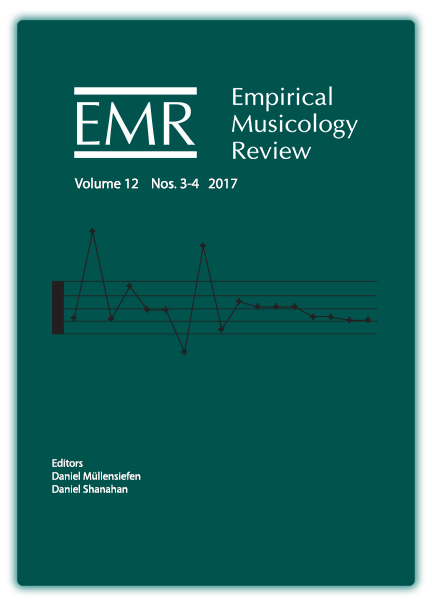Comparing Timeline Rhythms in Pygmy and Bushmen Music
DOI:
https://doi.org/10.18061/emr.v12i3-4.5823Keywords:
timelines, rhythm, Pygmy music, Bushmen music, PhylogeneticsAbstract
Combining theories of African rhythm from ethno/musicology and findings from anthropological research and population genetics with musical analyses based on transcriptions and computational phylogenetic techniques, this article compares rhythms used in Pygmy and Bushmen music in an attempt to provide new perspectives on an old debate that these musical cultures may share a common heritage. To do this, the comparative analyses focus on timelines: foundational rhythmic features that provide the structural basis of the music. The findings suggest that Pygmy and Bushmen timelines are interrelated and that most are organised according to the principles of 'rhythmic oddity' and maximal evenness. Generative theory suggests that commonly used rhythmic cells, in particular the 3:2 pattern, form the structural basis of many Pygmy/Bushmen timelines as well as many other timelines featured in African and African-derived musics. Timelines are also multi-purpose musical devices used in various different social contexts and their structure appears to be resilient to radical change. Phylogenetic analysis of timelines provides no clear Pygmy/Bushmen ancestral timeline, although it is possible that foundational rhythms such as the 3:2 pattern may have featured in the music of a common ancestral group.
Published
How to Cite
Issue
Section
License
Copyright (c) 2018 Adrian Poole

This work is licensed under a Creative Commons Attribution-NonCommercial 4.0 International License.


